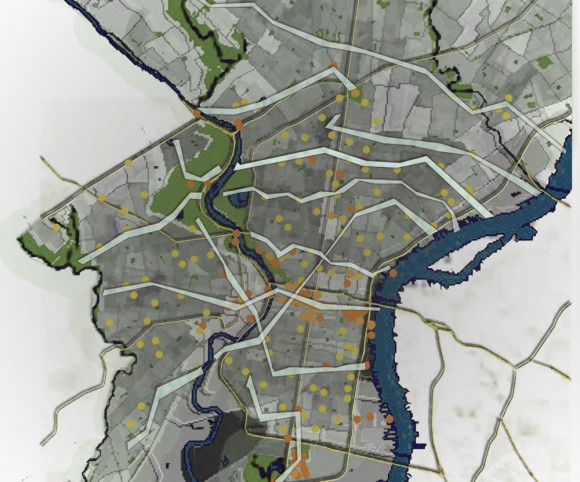Urban Voids
Inscribing Narratives in the Landscape
Envision a structure of light, a path that is sculptural and utilitarian; raised, allowing the ground to be healed, transformed, and re-appropriated. This urban promenade is a narrative, experiential and literal, by showing these urban spaces in transition and inscribing stories of the community’s past and aspirations for the future into its surface. It stands in the landscape as a reminder of the power of community efforts, to always reflect on this moment in history through the words of its people.
Reconnecting neighborhoods to regional parks and the river
Instead of seeing scattered vacant lots, it is an opportunity to create a new layer of urban fabric, a regional web of fluid open spaces and local nodes. It is a new way to move through the city, overcoming the obstacles of freeways, and accessing the river.
Creating Ecological Corridors
Around this structure the landscape grows wild, through the use of native plantings that require low maintenance, and the densification of the urban forestry. The large open spaces become natural ecosystems inside the city, like wetlands in brownfields, which have the potential to clean the ground to be redeveloped. Smaller urban spaces under this path become wild gardens and side yards. It is an ecological corridor reaching the river.
Promoting Public Health and Education
The path is a living city museum, a place of public and artistic expression, and a venue for learning about the urban history of Philadelphia. It connects to public institutions and places of interest. It is a fluid form of Arboretum, a place to experience and learn about native ecosystems and conservation. The focus of the path is on walking and biking, promoting alternative forms of transport and physical health.
Developing sustainable, adaptive and flexible urban forms
The structure is built of renewable materials; it uses solar energy for its lighting. It opens land under it for low-maintenance wild landscapes and reduces storm water runoff. It allows shared ownership of sideyards and multiple uses by suggesting borrowed air rights. It fits narrow lots, as well as large open spaces, and new developments benefit and adapt to its presence.

